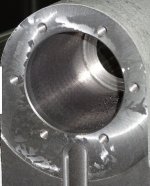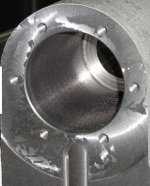This problem seems to pop up here quite often:
Is there any rule of thumb or guide what to expect from like 10xD drilled hole straightness and centerline drift(exit location)
Plain vanilla HSS drill?
Carbide twist drill?
Gun drilling?
workpiece rotating or drill rotating?
I only have some rough ballpark idea, ie 1/4" and 30" long hole is definitely gun drilling category if you want the exit on the opposite side...
Is there any rule of thumb or guide what to expect from like 10xD drilled hole straightness and centerline drift(exit location)
Plain vanilla HSS drill?
Carbide twist drill?
Gun drilling?
workpiece rotating or drill rotating?
I only have some rough ballpark idea, ie 1/4" and 30" long hole is definitely gun drilling category if you want the exit on the opposite side...






